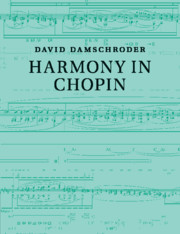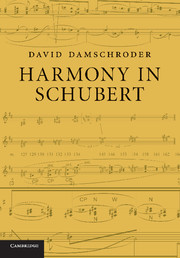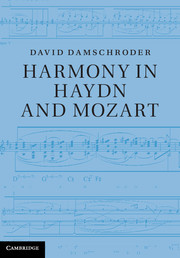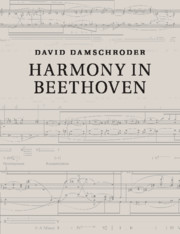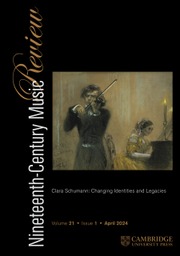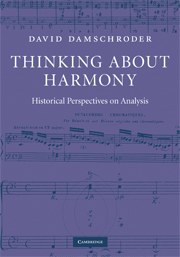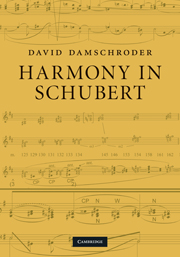Harmony in Chopin
£30.99
- Author: David Damschroder, University of Minnesota
- Date Published: January 2019
- availability: Available
- format: Paperback
- isbn: 9781107519565
£
30.99
Paperback
Other available formats:
Hardback, eBook
Looking for an inspection copy?
This title is not currently available on inspection
-
Chopin's oeuvre holds a secure place in the repertoire, beloved by audiences, performers, and aesthetes. In Harmony in Chopin, David Damschroder offers a new way to examine and understand Chopin's compositional style, integrating Schenkerian structural analyses with an innovative perspective on harmony and further developing ideas and methods put forward in his earlier books Thinking about Harmony (Cambridge, 2008), Harmony in Schubert (Cambridge, 2010), and Harmony in Haydn and Mozart (Cambridge, 2012). Reinvigorating and enhancing some of the central components of analytical practice, this study explores notions such as assertion, chordal evolution (surge), collision, dominant emulation, unfurling, and wobble through analyses of all forty-three Mazurkas Chopin published during his lifetime. Damschroder also integrates analyses of eight major works by Chopin with detailed commentary on the contrasting perspectives of other prominent Chopin analysts. This provocative and richly detailed book will help transform readers' own analytical approaches.
Read more- Proposes and demonstrates a fresh approach to harmonic analysis, reinvigorating central components of analytical practice
- Provides detailed analyses of over fifty works by Chopin, exploring broader contexts and levels of harmonic organization
- Juxtaposes analytical outcomes attained using the author's method with those of other prominent Chopin analysts
Customer reviews
Not yet reviewed
Be the first to review
Review was not posted due to profanity
×Product details
- Date Published: January 2019
- format: Paperback
- isbn: 9781107519565
- length: 312 pages
- dimensions: 248 x 190 x 18 mm
- weight: 0.63kg
- contains: 121 music examples
- availability: Available
Table of Contents
Preface
Part I. Methodological Orientation: The Mazurkas:
1. The architecture of a tonic pillar: twenty-seven regular tonic pillars from the mazurkas
2. Between the tonic pillars: tonal trajectories in twenty-seven mazurkas
3. Irregular pillars in the mazurkas: alternatives to the perfect authentic cadence
Part II. Masterpieces:
4. Étude in C Minor, op. 10, no. 12, in response to Graham H. Phipps
5. Nocturne in C# Minor (op. 27, no. 1), in response to Felix Salzer
6. Preludes in E Major and E Minor (op. 28, nos. 9 and 4), in response to Fred Lerdahl
7. Prelude in G Minor (op. 28, no. 22), in response to Alison Hood
8. Prelude in C# Minor (op. 45), in response to Jean-Jacques Eigeldinger and to Charles J. Smith
9. Ballade in F Minor (op. 52), in response to Edward Laufer
10. Barcarolle in F# Major (op. 60), in response to John Rink.
Sorry, this resource is locked
Please register or sign in to request access. If you are having problems accessing these resources please email [email protected]
Register Sign in» Proceed
You are now leaving the Cambridge University Press website. Your eBook purchase and download will be completed by our partner www.ebooks.com. Please see the permission section of the www.ebooks.com catalogue page for details of the print & copy limits on our eBooks.
Continue ×Are you sure you want to delete your account?
This cannot be undone.
Thank you for your feedback which will help us improve our service.
If you requested a response, we will make sure to get back to you shortly.
×
